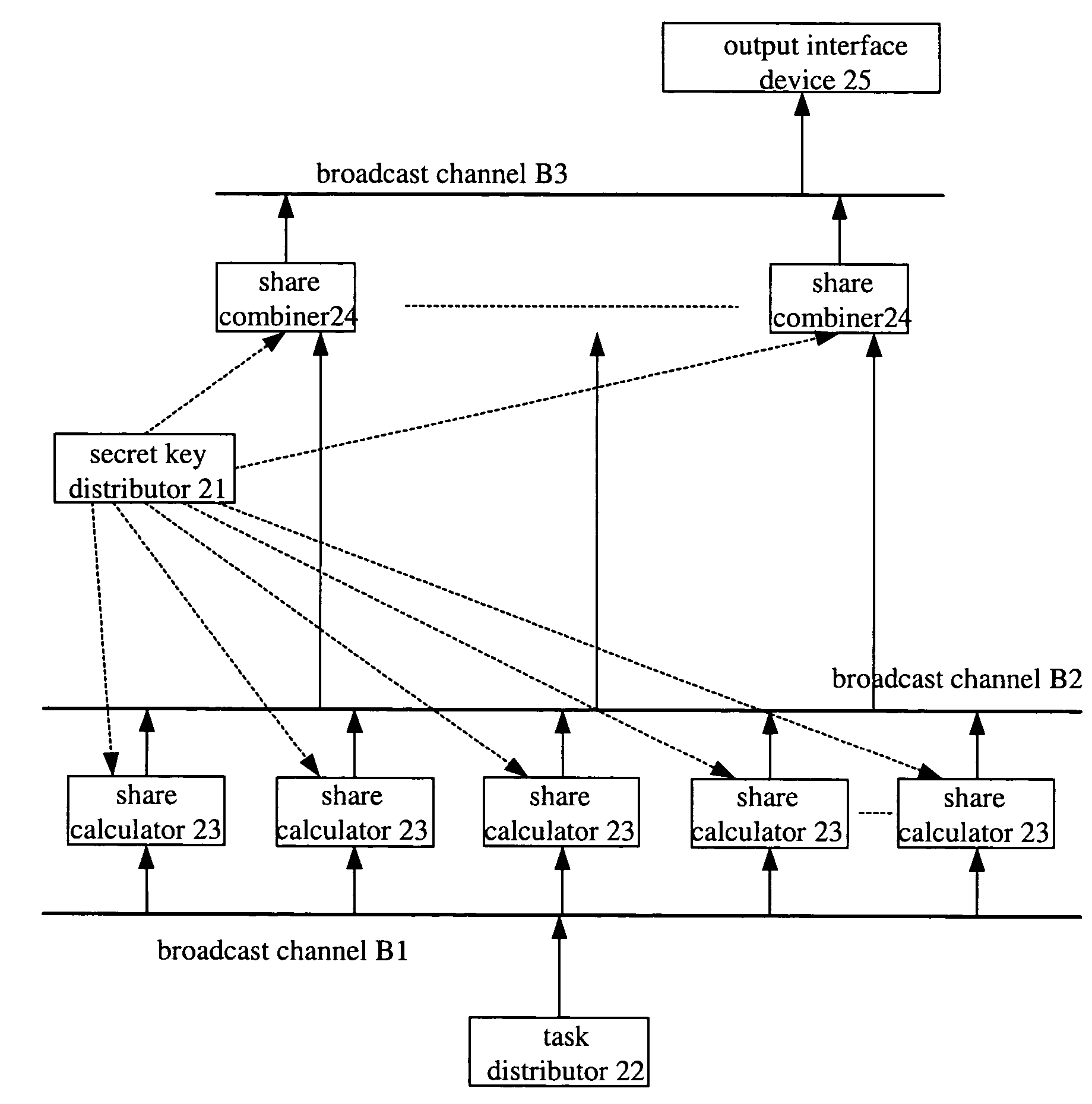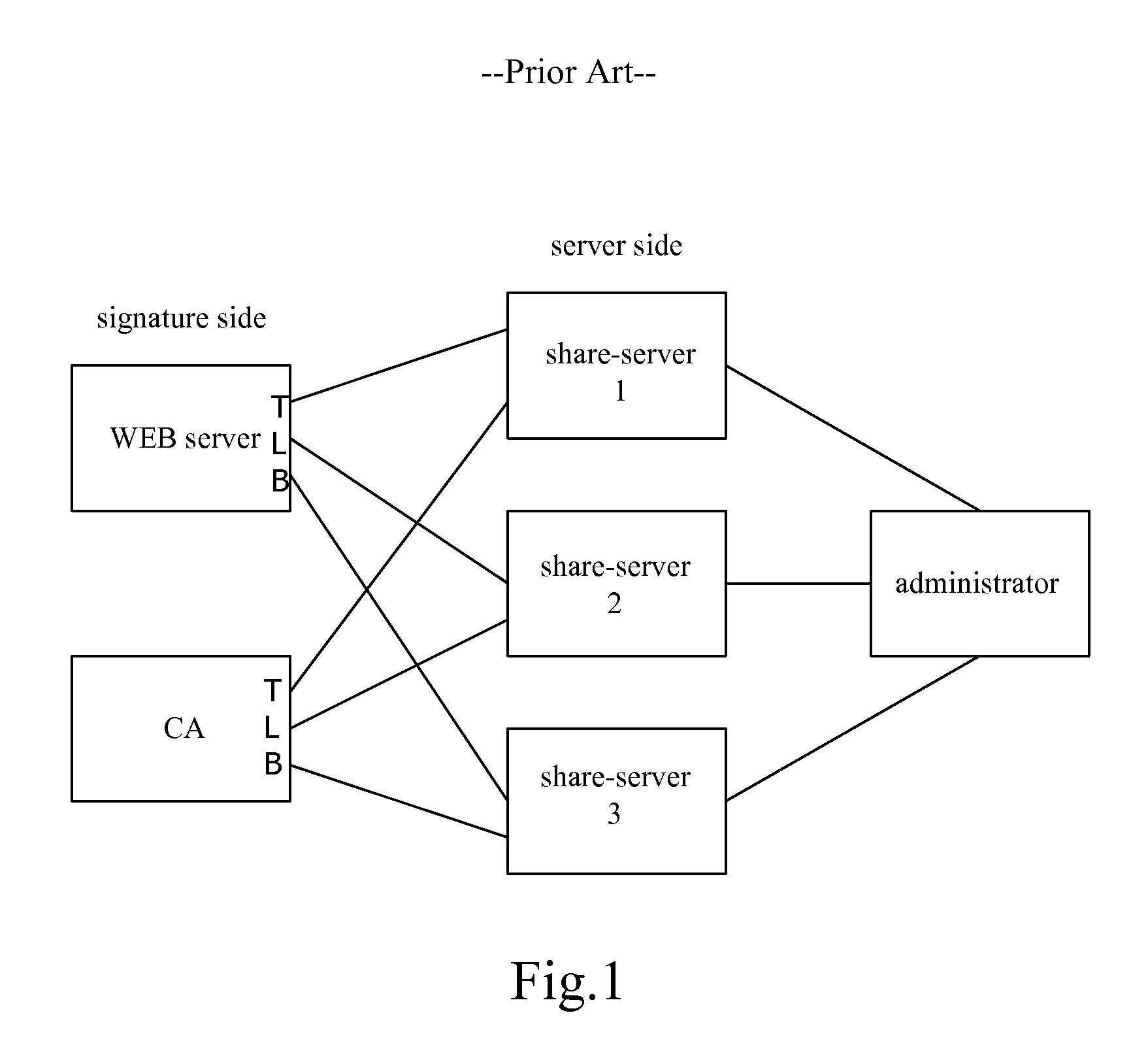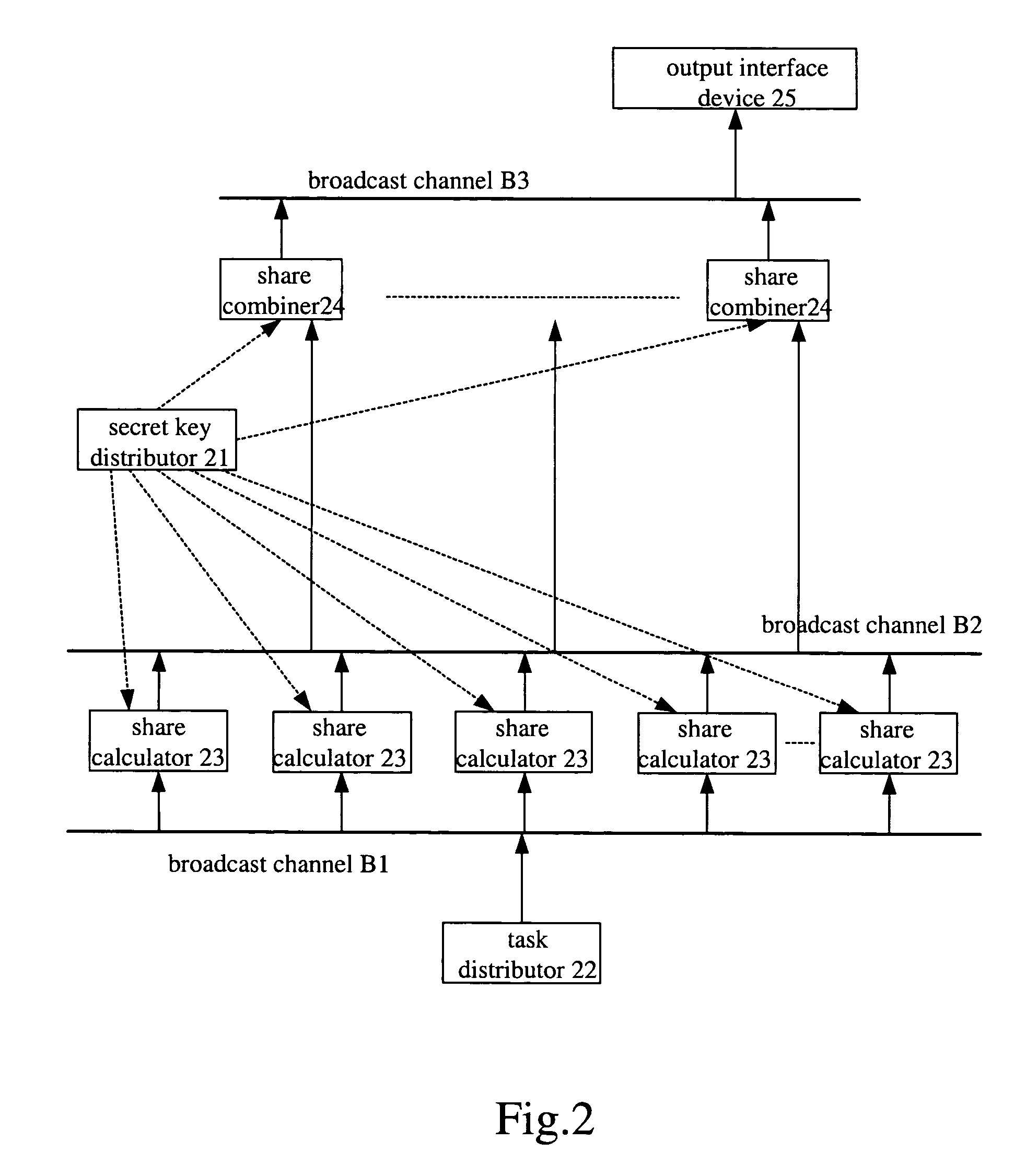In fact, deriving secret parameters from public parameters are computationally infeasible theoretically.
Further more, everyone can verify a digital certificate, but no one can
forge a digital certificate.
Once the CA's private key is compromised, all certificates issued by the CA must be revoked and the
network security controlled by the CA will be compromised.
According to this subject, many theoretical researches have been carried out in the world, while some of the theories and methods are too difficult to implement due to the complexity.
On the other hand, present development of PKI is focused on producing compatible digital signature products, but little development has made on aspect of secure signature with
intrusion tolerance ability.
In general, CA has to be an online network device, especially the one that gets direct connection with users to provide corresponding certificate services, thus it is unavoidable to be attacked.
When a
hacker attacked a CA successfully, he might acquire internal resource of the CA, consequently the CA private key, and this would cause fatal damage to the PKI system.
Advantages of this scheme are obvious, but the disadvantages are as follows.1. It is difficult to allocate and manage sub-secret-keys.
Before computation, the
client must select t share-servers, then find out data groups matching to the t share-servers and inform them; once one of the t share-servers has been destroyed, the above selecting procedure must be repeated.4. It is difficult for the
client (CA or
Web server) to remember every change made by the share-servers, it is not easy to manage or extent, especially when the
client is online, it is more difficult to extend so that updating the data of client is necessary whenever the share-servers' parameters change.
In this scheme, CA is performed by the combiner, so the synchronization problem before computation is eliminated, but it increases computation difficulties and decreases computation performance of the combiner.
It can be seen that the features and disadvantages of this scheme lie in:1. It is still a single layer sharing structure consisted of share-servers, the combiner does not store any secret information, so any device can fulfill the combination work.2. Computation volume of the combiner is approximate to or equal to that of signing for t times, this computation volume is far more than that of the share-servers, so even if the
algorithm can be implemented, the scheme cannot be used in practical signing.3. It is required to use strong primes, which will bring about limitation for some applications.4. It is only described theoretically that other devices will not be affected when increasing or deleting a share-
server; yet, the description only provides
mathematical formula with no explanation on implementation or
system structure.
Nevertheless, as parameter selection is greatly limited, so
algorithm principle and proving of security becomes complicated.
From the mathematical description, the scheme has the following disadvantages:1. A secret-key is shared equally, that is, the share is a single layer structure.2. Selection of parameters is limited and prove of security is complicated, so possibility of loophole occurring is increased.3. The synchronization problem exists and if taking away synchronization, computation volume of the combiner will be greatly increased.
But in the original Shamir scheme, the secret-key has to be recovered first and this is unexpected for any scheme, for above all the signature security must assure that it is impossible to recover the secret-key in any device.
Furthermore, when an element ∘ and its φ(N) inverse ∘−1 are known, the φ(N) can be obtained, so it is obviously unsafe.
Therefore, theoretically the above schemes have evident disadvantages and there are a lot of problems that need solving before the practical application.
 Login to View More
Login to View More  Login to View More
Login to View More 


